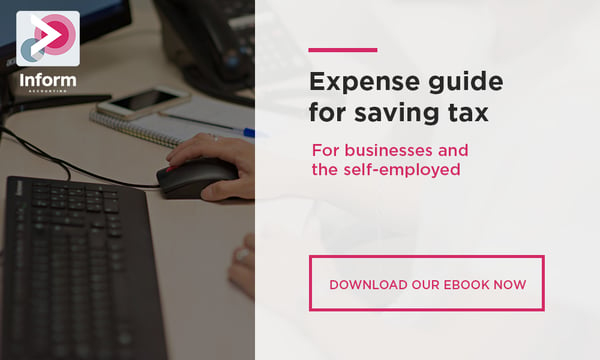BLOG
Income from savings – What is tax-free
Not all types of income are equal from a tax perspective, and savings income enjoys dedicated allowances, tax rates and reliefs which allow a taxpayer to enjoy some or all of their savings income tax-free.
Personal allowance
The personal allowance for both 2021/22 and 2022/23 is set at £12,570. Any savings income that is sheltered by the personal allowance can be enjoyed tax-free.
Personal savings allowance
Taxpayers who pay tax at the basic or higher rates of tax also receive a dedicated savings allowance – the personal savings allowance. For both 2021/22 and 2022/23 this is set at £1,000 for basic rate taxpayers and at £500 for additional rate taxpayers. The personal savings allowance is available in addition to the personal allowance.
Taxpayers who pay tax at the additional rate do not benefit from a personal savings allowance.
The personal savings allowance is available to shelter interest from bank and building society accounts, saving and credit union accounts, unit trusts, investment trusts and open-ended investment companies, peer-to-peer lending, trust funds, payment protection insurance, Government or company bonds, life annuity payments and some life insurance contracts. Interest from tax-free savings accounts does not count towards the allowance.
Savings starting rate
Individuals whose non-saving income is low may also benefit from the special starting rate of tax on savings income of up to £5,000. This is set at 0%, meaning savings income which falls within the starting rate band is received tax-free.
The availability of the savings starting rate depends on the amount of taxable non-savings income that a person receives in a tax year – the more non-savings income that a person has, such as employment income or a pension, the less they are able to benefit from the savings zero rate.
If a person has non-savings income of £12,570 or less, their income will be covered by their personal allowance. Where this is the case, they will be able to benefit from the full savings starting rate band of £5,000, and receive savings income of £5,000 tax-free in addition to any savings covered by their savings or personal allowance or received from tax-free accounts, such as ISAs. Where the personal allowance is not used in full, any unused personal allowance can be set against savings income, increasing the amount of savings income that can be received tax-free.
Where a person has other income in excess of the personal allowance, this will eat into the savings starting rate. If the taxable income (i.e. income in excess of the personal allowance) is less than £5,000 (as will be the case where non-savings income is between £12,570 and £17,570), the savings starting rate band is reduced by the amount of the taxable non-savings income. This is illustrated by the following example.
Example
Elsie receives a pension of £14,000 a year. She also has savings income of £7,000 a year.
Her personal allowance is set against her pension, reducing her taxable pension income to £1,430.
As this is less than £5,000, her savings starting rate band is reduced by her taxable non savings income of £1,430 to £3,570.
Consequently, the first £3,570 of Elsie’s savings income will benefit from the starting savings zero rate, while the next £1,000 will be sheltered by her personal savings allowance.
The remaining £2,430 (£7,000 - £3,570 - £1,000) will be taxed at the basic rate of 20%.
The starting savings rate band is eliminated in its entirety where a person has taxable non-savings income of £5,000 or above. This will be the case where they have non-savings income of at least £17,570.
Tax-free savings of £18,570
A person who receives the basic personal allowance and only receives savings income can enjoy savings income of up to £18,570 a year tax-free (in addition to any savings income from tax-free savings account). This is made up of the personal allowance of £12,570, the savings starting rate band of £5,000 and the personal savings allowance of £1,000.
This figure will be higher if the person has the marriage allowance (worth an additional £1260) or receives the married couple’s allowance (available where at least one spouse or civil partner was born before 6 April 1935).
Tax-free savings
In addition to the above, a person can enjoy savings income from tax-free savings accounts tax-free. Interest on ISAs and some National Savings and Investment accounts is free of tax.
Get in touch
Get in touch with us today to find out how we can help keep you compliant, and benefit from our expert advice.




.jpg?width=1500&height=1000&name=amy-hirschi-K0c8ko3e6AA-unsplash-(5).jpg)

